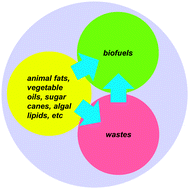Conversion of glycerol to hydrogen rich gas
Abstract
Presently there is a glut of glycerol as the by-product of biofuel production and it will grow as production increases. The conundrum is how we can consume this material and convert it into a more useful product. One potential route is to reform glycerol to hydrogen rich gas including synthesis gas (CO + H2) and hydrogen. However, there is recent literature on various reforming techniques which may have a bearing on the efficiency of such a process. Hence in this review reforming of glycerol at room temperature (normally photo-catalytic), catalysis at moderate and high temperature and a non-catalytic pyrolysis process are presented. The high temperature processes allow the generation of synthesis gas with the hydrogen to carbon monoxide ratios being suitable for synthesis of dimethyl ether, methanol and for the Fischer–Tropsch process using established catalysts. Efficient conversion of synthesis gas to hydrogen involves additional catalysts that assist the water gas shift reaction, or involves in situ capture of carbon dioxide and hydrogen. Reforming at reduced temperatures including photo-reforming offers the opportunity of producing synthesis gas or hydrogen using single catalysts. Together, these processes will assist in overcoming the worldwide glut of glycerol, increasing the competitiveness of the biofuel production and reducing our dependency on the fossil based, hydrogen rich gas.


 Please wait while we load your content...
Please wait while we load your content...